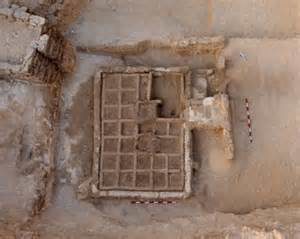 The Djehuty Project has discovered a 4,000 year-old Funerary Garden- The first such garden ever found on the Dra Abu El-Naga hill in Luxor, Egypt as reported by a number of news outlets. The discoveries made by this project also shed light on a key epoch when, for the first time, Thebes (now Luxor) became the capital of the unified kingdom of Upper and Lower Egypt about 4,000 years ago.
The Djehuty Project has discovered a 4,000 year-old Funerary Garden- The first such garden ever found on the Dra Abu El-Naga hill in Luxor, Egypt as reported by a number of news outlets. The discoveries made by this project also shed light on a key epoch when, for the first time, Thebes (now Luxor) became the capital of the unified kingdom of Upper and Lower Egypt about 4,000 years ago.
The archaeologists explain that they knew of the possible existence of these gardens since they appear in illustrations both at the entrances to tombs as well as on tomb walls, where Egyptians would depict how they wanted their funerals to be. This is the first time that a physical garden has ever been found, and it is therefore the first time that archaeology can confirm what had been deduced from iconography. The discovery will provide valuable information about both the botany and the environmental conditions of ancient Thebes, of Luxor 4,000 years ago”.
In addition, the experts state that the plants grown there would have had a symbolic meaning and may have played a role in funerary rituals. Therefore, the garden will also provide information about religious beliefs and practices as well as the culture and society at the time of the Twelfth Dynasty when Thebes became the capital of the unified kingdom of Upper and Lower Egypt for the first time. The archeologists also know that palm, sycamore and Persea trees were associated with the deceased’s power of resurrection. Similarly, plants such as the lettuce had connotations with fertility and therefore a return to life.
The garden, or funeral garden, was unearthed in an open courtyard at the entrance of a Middle Kingdom rock-cut tomb very probably from the Twelfth Dynasty, circa 2000 BCE. In one corner, the researchers recovered a still upright tamarisk shrub complete with its roots and 30cm-long trunk, beside which was a bowl containing dates and other fruit which may have been given as an offering.















